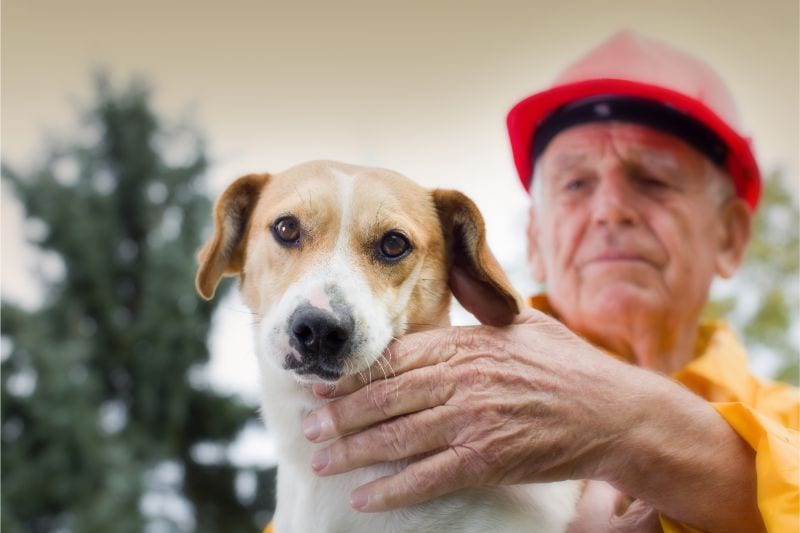Stop, Drop, and Roll (…Over)? Pet Fire Safety Tips You Can Count On

While furry family members are responsible for over 1,000 house fires every year, emergencies can happen any time for any number of “reasons.” We cannot always predict when dangerous events or potentially life-threatening disasters will occur, but we can definitely do our best to prevent the worst possible scenarios. Having a plan for pet fire safety is always a good idea, but the summer presents a special opportunity to remind even the most prepared pet owners.
The Eventuality of Fire
By the time midsummer rolls around, wildfires have the potential to threaten people and animals in close proximity to brush, trees, and buildings. The eventuality of fire in and around our communities often leads owners to take extra precautions regarding pet fire safety.
Best For You — Best For Them
If you are ordered to evacuate your property, your pet should do the same. Never leave your animals behind in the case of a natural disaster like fire. Doing so can expose them to entrapment, serious injury, and even death.
First, Pet Fire Safety
If your pet is not microchipped, we urge you to do so. Your pet’s collar can be removed or they can slip out of it. Stressed animals can also flee, never to be seen again.
As soon as you know or suspect that a dangerous situation may play out, be sure to bring your pet to safety. Encourage them to hang out inside their travel kennel so they are ready to go if you have to leave the home.
Make a Plan
Knowing where you and your animals can go in the case of evacuation is a big part of the battle. In advance, call places that are close enough for you to drive to within a short amount of time, but far enough from your home and the blaze.
Public evacuation shelters typically do not allow pets. Collect a list of kennels or boarding facilities within a few hours’ drive. Notify friends and relatives that you may need their help in the case of emergency. Hotels and motels are good bets, but check that they are pet-friendly.
The Kit Fix
Emergency planning must include amassing supplies in your pet’s emergency kit. They should have enough unexpired food and water to last a week. Canned food can be quite heavy, so be certain that you can carry their kit. Also include, as appropriate:
- Prescription medication
- Extra collar and leash
- First aid supplies
- Medical records and recent photo of your pet
- Can opener
- Litter and pan
- Puppy pee pads
- Sanitizing wipes
- Bedding, treats, toys
How Else Can You Prepare?
Protecting your pet’s safety and well-being can also include the following tactics:
- Knowing where they like to hide.
- Establishing escape routes and practicing together while holding their crate and/or their emergency kit.
- Testing smoke detectors and wiring them for first responders when you’re not home.
- Eliminating fire hazards in and around the home, such as live flame candles, loose wires, fireplaces, loose stove knobs, liquid potpourri, and more.
- Placing a Rescue Alert sticker on your front door or window for rescue workers to see. These alert rescuers to the type and number of animals in the house.
Please let our veterinarians and staff know if you have any questions or concerns. We’re always here for you at Schertz Animal Hospital.
Share This Article
About
Schertz Animal Hospital
Since 1976, Schertz Animal Hospital has offered the greater San Antonio area outstanding pet care. Our state-of-the-art animal hospital in Schertz, TX compliments our stress-free handling and experienced veterinary staff. Make an appointment online or give us a call at (210) 659-0345 today!
